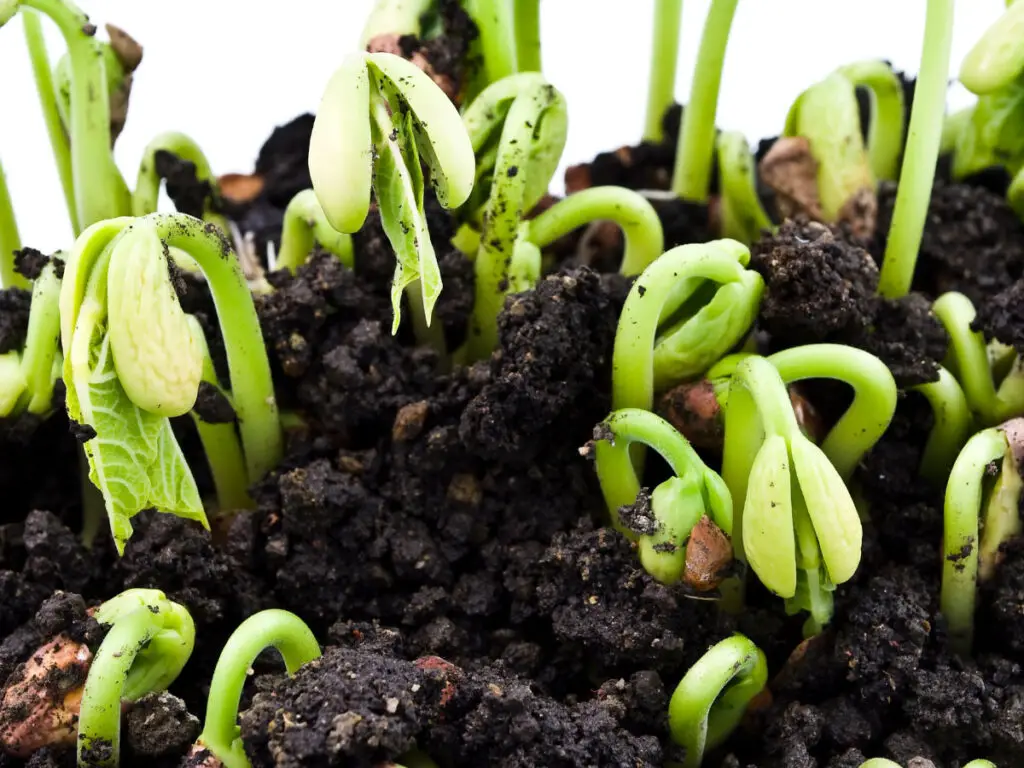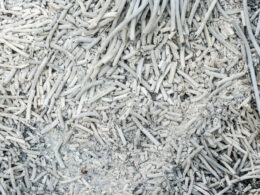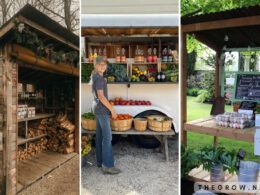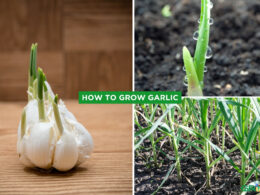In This Article Show
Growing flowers from seed or sowing vegetable seeds for your garden is fun, but how do you germinate seeds successfully and grow seedlings healthy?
We have all been there. Colorful packets selling the dream of your flower-filled garden, the tasty & abundant crop of a vegetable variety splashed across the front of a seed packet: hope and excitement and herbs, let’s not forget herbs like basil.
Compost has been bought, and new pots or seed trays have been chosen. A wonderful morning might be spent in the garden sowing seeds, watering, and placing them in situ while a warm cuppa is enjoyed throughout the activity.
Labeled, neatly lined up, and ready to go.
- 7 days pass; for most seeds, this is the earliest they germinate.
- 15-day check and still nothing.
- A month has passed. The compost has a white, moldy substance or has dried up with no sign of life.
Give up. Why bother after all that initial hard work for nothing?
DON’T GIVE UP!
Get Gardening For Beginners
Our new EBOOK shows newcomers and green thumbs alike a step by step guide to growing the garden of their dreams.
The germination issues you face may have a simple fix; here are some of my top tips for successful seed germination and seedling care.
When to Sow Seeds
I am going to be controversial. As encouraging as it is to see social media gardeners sow their seeds through winter, don’t be fooled that this is a successful approach for everyone, especially when a beginner gardener or you’re finding your feet when it comes to growing a new variety.
Being a professional (and domestic) gardener for most of my life, I can tell you that I rarely sow summer flowering annuals or non-salad crops before the end of February. I find it less hassle to wait until early spring when I can happily sow in my greenhouse with some warmth and increased success.
However, I do grow microgreens seeds throughout winter on my windowsill.
How to grow microgreens seeds packed full of nutrients and vitamins, more than most fully-grown vegetables, it’s easy, but first, Are microgreens easy to grow? Yes, and they are seeds that germinate fast.
My favorite list of edible microgreens to grow:
- Cress
- Basil
- Mustard
- Beets
- Radish
- Chard.
Sow onto seed-friendly compost in a shallow container (takeaway tubs are perfect).
Get Gardening For Beginners
Our new EBOOK shows newcomers and green thumbs alike a step by step guide to growing the garden of their dreams.
Lightly cover with compost, ideally, water with a spray bottle until the compost is damp. Water gently regularly, if the compost feels damp no watering is required.
Microgreens will grow all year round if they can be kept warm with plenty of light.

What to sow now, if you can’t wait!
Sweet Peas, easy cut flowers to grow from seed for beginners with scented blooms. Or growing tomatoes from seed.
When to sow Sweet Peas? At the end of February through March or in autumn use deep seed trays with segments, or try growing Sweet Peas in toilet rolls in a seed tray. They need depth for their long roots to anchor deep into the compost.
When to sow tomatoes? From February onwards, undercover in pots or traditional seed trays with a light covering of compost & keep around 25oC.
Easy flowers to grow from seed:
- Cosmos
- Nigella
- Calendula
- Zinnia.
Easy vegetables to grow from seed:
- Pumpkin
- French Bean
- Rainbow Chard
- Lettuce.
Best Compost For Seeds
Choose good quality. Cheap brands aren’t good for seeds trying to germinate due to the structure of the compost (normally claggy with huge bark pieces). Peat-free compost for seed sowing and potting-on is best being light and airy for seeds to push their shoots & roots through easily as they germinate.
How to water seedlings and what temperature seeds need to germinate.
Keep early sowings warm on a sunny windowsill, heated greenhouse, or in a propagator. Most seeds’ optimum temperature for germination is 25oC, and when they are seedlings too.
Checking temperature is good practice even in warmer months. Using a germination heat mat can help get early sowings growing successfully.
Overwatered compost can make seeds rot off before they germinate. Too much water can also impact seedling health. This, combined with low temperatures, encourages fungal problems leading to damping off, making seedlings flop, wither and die.
How to prevent damping off? Keep the compost damp, not wet, only water when dry, use clean seed trays/pots when sowing, and maintain a temperature around 25oC.
Letting compost dry out can impact negatively, too; the seed could begin germinating then dry up and die.
This sounds intense, but honestly, make a cuppa, head to the greenhouse or seed-tray-clad windowsill, and check the dampness of the compost for each variety/pot/tray you have sown. This daily task can improve seed germination and seedling health.
A heated propagation unit can be useful if there’s little or no heat in the location where you grow your seeds. If there is good warmth, just a clear propagation lid for your seed trays will do the trick protecting from drafts.
Propagation lids can also safeguard you from pests like mice or slugs eating your seeds/seedlings.
Frequently Asked Questions
What are the ideal conditions for seed germination?
Seed germination typically requires moist soil, warm temperatures, and adequate light.
How long does it take for seeds to germinate?
The time it takes for seeds to germinate can vary depending on the type of seed and the conditions in which they are germinating. Generally, it can take anywhere from a few days to a few weeks.
How often should I water my seeds during germination?
Seeds should be kept consistently moist, but not waterlogged. A good rule of thumb is to water the seeds when the soil surface feels dry to the touch.
Can I start seeds indoors before transplanting them outside?
Yes, starting seeds indoors can be a great way to give them a head start on the growing season, especially if you live in an area with a short growing season.
How deep should I plant my seeds?
The depth at which you plant your seeds will depend on the size of the seed. Typically, seeds should be planted at a depth of about two to three times their own diameter.
What are the common causes of seed germination failure?
Some common causes of seed germination failure include poor seed quality, dry or waterlogged soil, and temperatures that are too high or too low.
How can I tell if my seeds have germinated?
Germinated seeds will typically sprout a small shoot and a set of leaves. This can take anywhere from a few days to a few weeks depending on the type of seed and the conditions in which they are germinating.
Can I re-use last year’s seed, or they are not viable anymore?
The viability of a seed can depend on many factors including the storage conditions, the seed variety, and the time since it was harvested. It is best to check the seed packet for specific information about the storage life of the seed or conduct a germination test.
My top tips for seed germination are summarised;
- Keep at optimum temperature
- Grow in a sunny location
- Daily water check
- Try different varieties if some didn’t work. We all have the odd variety that never works, whatever we do!
- Protect from pests
- Don’t sow too early.
Happy sowing, garden lovers.










